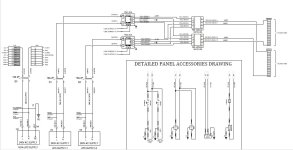Hello All,
We are using two "QUINT-PS/1AC/24DC/20 - 2866776" Power supplies for one of our project. The input power is single phase 240V and out power is 24VDC which is used to drive PLC CPUs, I/O Racks, and solenoid valve relays.
There is some kind of hissing sound coming from the Power supplies when turned ON. The total estimated load is 16.39 Amps and 430 watts.
The two power supplies are for redundancy.
Is there any specific reason behind this behaviour?
Please help
Regards
Vivek
We are using two "QUINT-PS/1AC/24DC/20 - 2866776" Power supplies for one of our project. The input power is single phase 240V and out power is 24VDC which is used to drive PLC CPUs, I/O Racks, and solenoid valve relays.
There is some kind of hissing sound coming from the Power supplies when turned ON. The total estimated load is 16.39 Amps and 430 watts.
The two power supplies are for redundancy.
Is there any specific reason behind this behaviour?
Please help
Regards
Vivek







